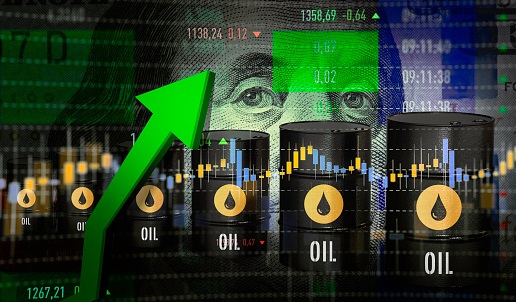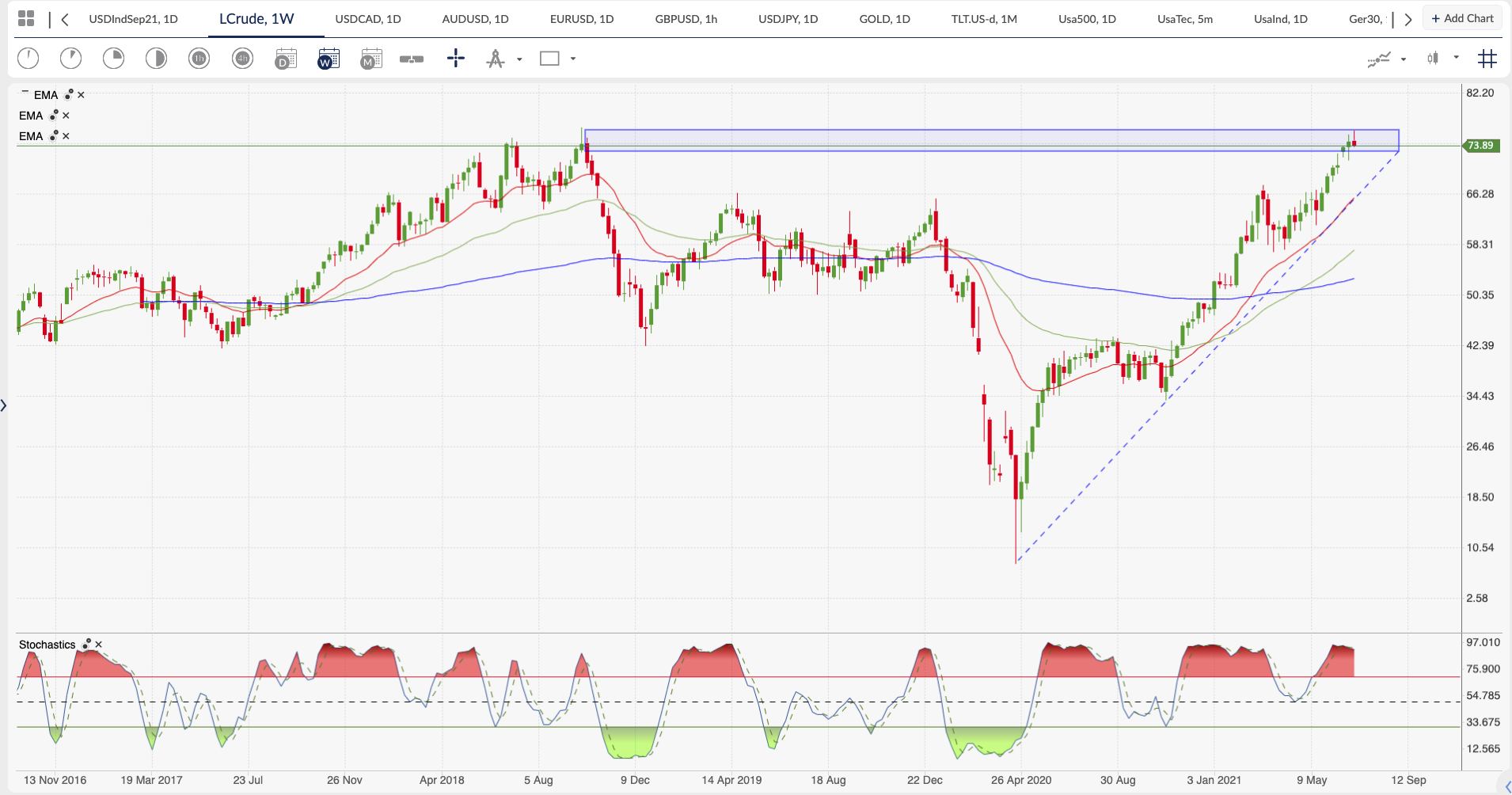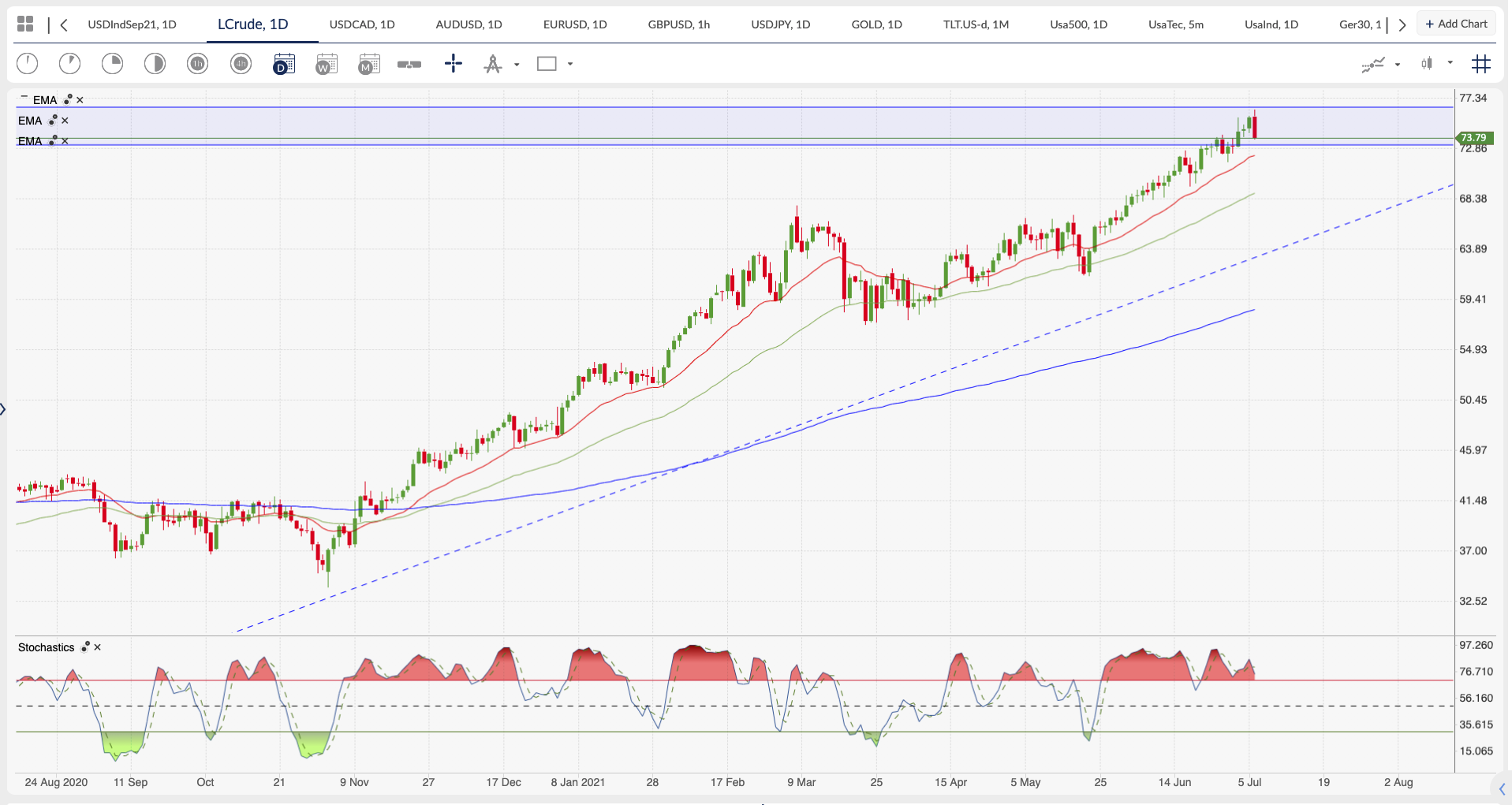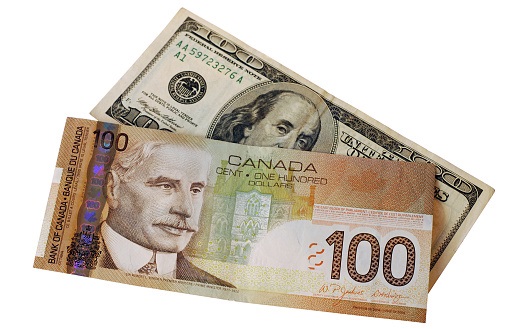Weekly Commodity Analysis
The cost of oil rises to a price last seen in October 2018 and Americans will soon start complaining that the current Presidents policies are doing nothing to help the prices at the pump. OPEC+ cancelled a meeting on Monday, which means no deal was reached regarding plans to increase production from August through to December.
We’ve seen it before where a country doesn’t like a proposal and digs its heals in, but unlike last time the price of oil went up rather than down. The United Arab Emirates (UAE) opposed the plan as it believes quotas are currently too low, which means they are also quite happy with the price in oil taking a bit of a dip from these current levels.
We have been calling for the price of oil to touch the 2018 highs and if the market sees a tightening in available stock and an increase in demand, we should get much higher than the $76.88 on WTI.
Lately the consensus has been that global demand will outstrip supply by year-end assuming demand pics up as countries open up their economies and the COVID-19 variants are dealt with by the current vaccines.
Higher prices will generally encourage the US shale industry to ramp up and we could see the nations within OPEC+ breakaway and do their own thing if no deal is agreed upon in August. The Biden administration is pushing for a compromise solution in the talks, a White House spokesperson said on Monday.
“We are not a party to these talks, but Administration officials have been engaged with relevant capitals to urge a compromise solution that will allow proposed production increases to move forward,” the spokesperson said.
There is also the higher probability of Iranian oil coming to market in the next few months of which the Iranian’s claim could be anywhere between 2 million to 6 million barrels per day. If they were to bring on supply, the deficit would be squashed quite quickly, so it’s unsurprising the Saudi led coalition are having to manage this with a lot of discipline.
“As negotiations continue, we estimate that most outcomes still imply higher prices in coming months as the physical market tightens,” Damien Courvalin, head of energy commodity research at Goldman Sachs Group Inc., said in a report.
The headwind is still COID-19 and especially the Delta variant, which investors are having to pay a large amount of interest to. So far, the variant appears to be spreading faster in regions with low vaccination rates. The UK, Germany, Italy, Spain and Canada are now partially or fully vaccinated across most age groups and have either caught up or surpassed the vaccination rate in the USA.
Global oil markets have quickly shifted from a period of oversupply from collapsing demand during the height of the pandemic in 2020 to now where there is a significant supply shortage. Since the beginning of the initial OPEC+ plan last April the group of producing nations has reliably erred on the side of restraint. Russia is the most likely nation to ramp up supply to try and fill the 2-million-barrel shortfall, as they have been in favour of a 1 million increase. Across twitter today there was a lot of trending tweets around whether or not Putin would try and start an OPEC+ negotiation. All of which has been denied so far. But if it were the United Arab Emirates (UAE) that went against the current decision it would be more likely that OPEC would split, so a more volatile outcome to be aware of.
The UAE has said it was not alone in seeking a higher baseline as others, including Azerbaijan, Kazakhstan, Kuwait and Nigeria, had requested and received new baselines since last year’s deal was agreed
The oil supply management strategy of OPEC+ has proven to be immensely successful, following on from the price wars of 2020 and generally since the inception of the group in 1960. Energy price stability is key to keeping inflation down as we have seen how much of an effect higher oil process have on the CPI and PCE readings, cost of commodities and goods.
Over the last year WTI is up 105.58% and in the last 3 months has risen 26.74%. Oil is currently in backwardation showing that the market is seeing supply as the main issue a year on from the oversupply, though since this morning’s Saudi Arabia Official Selling Prices (OSPs) the price has come off the recent highs. Saudi set the August OSP for Arab light crude at $2.70 a barrel above the Oman/Dubai average for Asia, up 80 cents from July. The OSP to the United States was set at a premium of $1.25 a barrel over Argus Sour Crude Index (ASCI), $0.20 up from July. WTI dropped from a high of $76,98 to currently trade at $74.83.
See real-time quotes provided by our partner.
The last 7 weeks for WTI has been immense so a pull back to an area of value would be healthy for the markets and traders will want to take profits amid all of the uncertainty.
See real-time quotes provided by our partner.
On the daily chart waiting for a significant pullback so that the Stochastic Indicator (10,3,3) is oversold would be the first indication of a possible buy. The assumption would be that the moving averages on the daily chart, would be stacked in a bullish manner, with the 20, 50 and 200 all on top of each other still. Then either waiting for a higher close or a close back above the 20 ema, would be a signal to buy the dip as we do with all our trend following ideas.
Things to keep an eye on for an invalidation of the long trade would be if price got below the recent balance area and $57 per barrel. If we closed below that level, the 200 ema would also probably be above price and so that would start acting as dynamic resistance.
Fundamentally oil takes a hit if the UK reverses their decision to open up fully in July and something happens in Europe to curtail demand.
Volatility will come into the markets if countries move away from the agreed output increases of 400k-500k and if there is a break away from the OPEC cartel.






